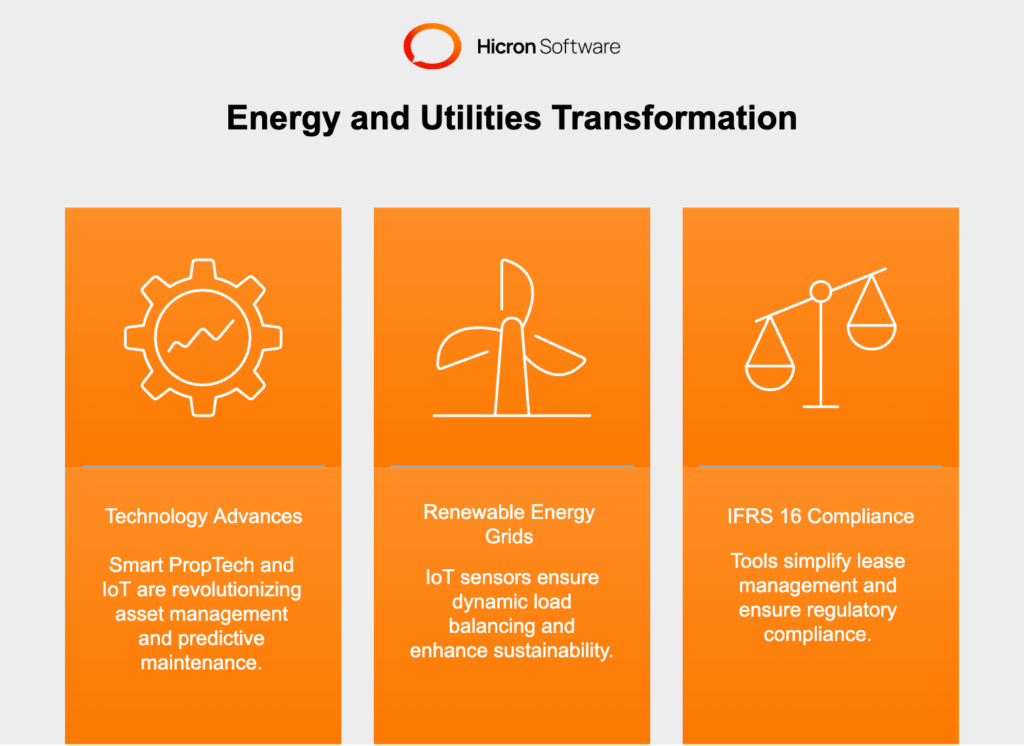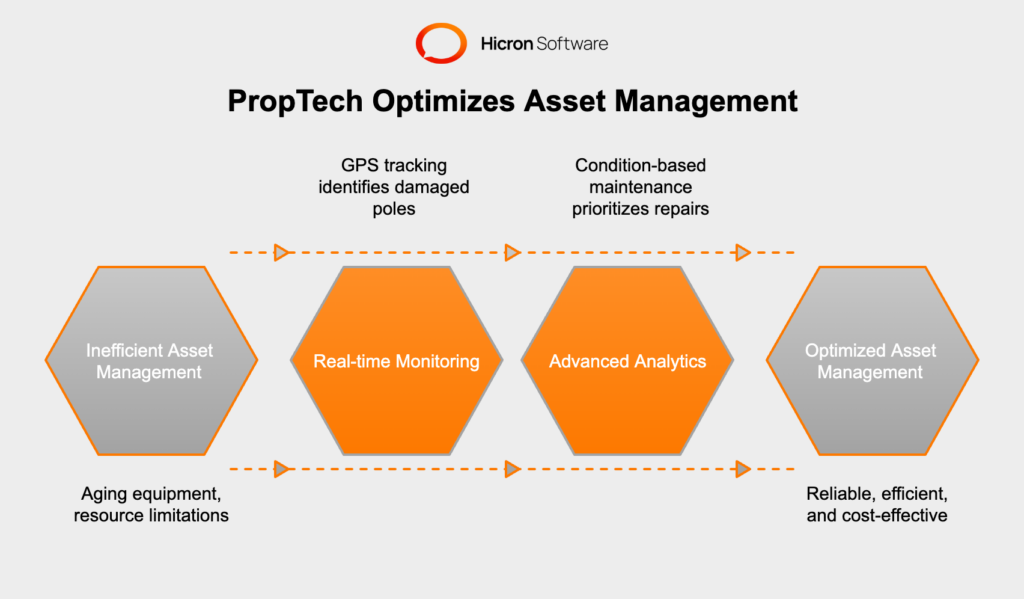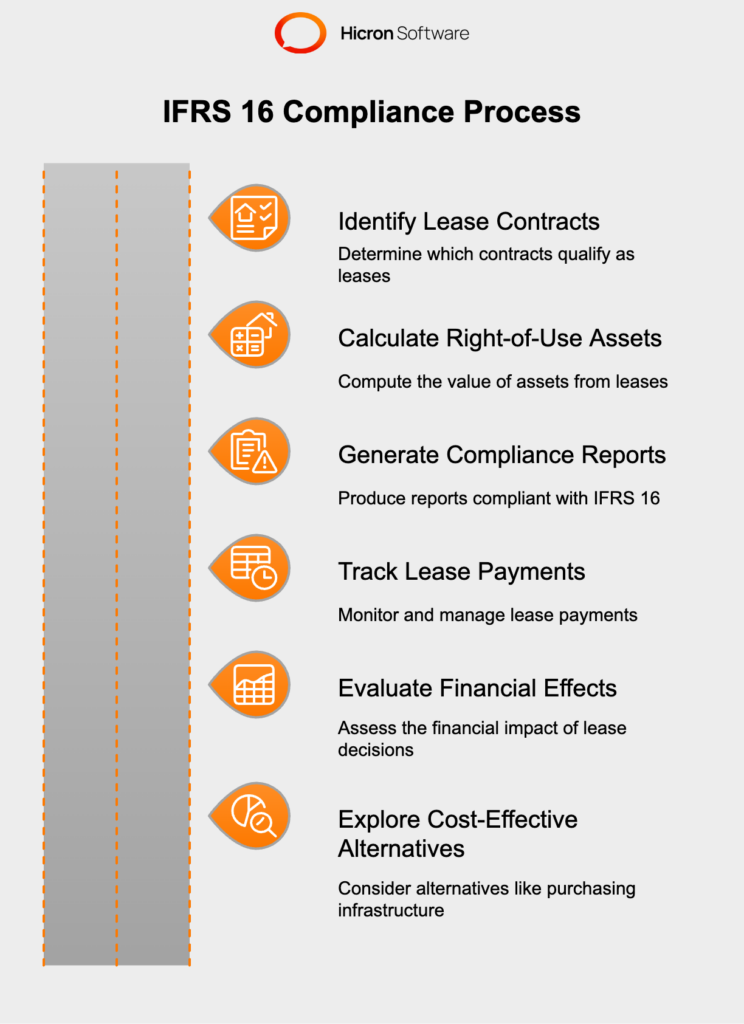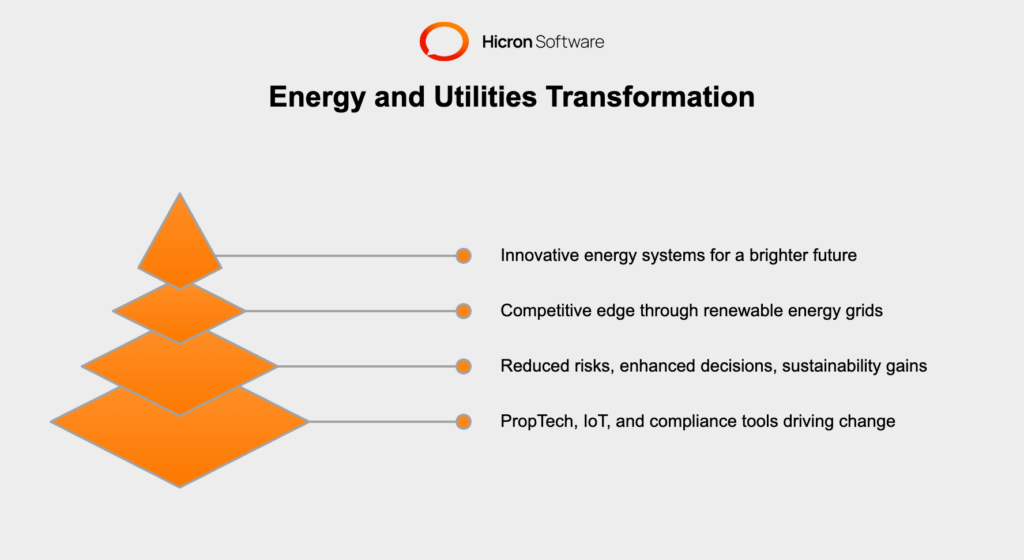10 Real Estate Software Development Companies in 2025
- February 03
- 9 min

The energy and utilities sector is experiencing a transformative wave like never before. Aging infrastructure, rising demand, and strict regulatory standards are pushing the industry to rethink how it operates. Advanced technologies like smart PropTech solutions, IoT integration, and compliance-enabling tools are reshaping operations and setting the stage for a smarter, more sustainable future.
These technologies serve as the backbone for a more efficient and reliable energy ecosystem. PropTech platforms streamline asset management, IoT devices enable real-time insights and predictive maintenance, and compliance software simplifies adherence to complex regulations. Together, these solutions tackle the sector’s toughest challenges while driving progress in sustainability and operational excellence.
This shift is about creating resilient systems that power both daily life and global advancement. What does this transformation mean for utility providers, energy companies, and their customers? And how can these innovations ensure a sustainable future? Keep reading to uncover how technology is revolutionizing energy and utilities, one solution at a time.
Key takeaways:
The energy and utilities sector is undergoing rapid transformation, driven by the need to address pressing challenges like aging infrastructure, increasingly frequent extreme weather events, and the complexities of regulatory pressures. These hurdles have long hindered efficiency and reliability, but innovative solutions are now paving the way for resilience and growth.
Advances in technology, including smart PropTech solutions, are revolutionizing asset management in utilities, offering centralized oversight and real-time insights to tackle infrastructure vulnerabilities. Similarly, the proliferation of IoT in the energy sector enables predictive maintenance, reducing downtime and optimizing resource allocation. Renewable energy grids, powered by IoT sensors, ensure dynamic load balancing, helping providers adapt to fluctuating demand while enhancing sustainability.
Tools for IFRS 16 compliance also simplify lease management, ensuring organizations meet global regulatory standards with minimal operational disruption. This shift is a complete energy and utilities transformation designed to future-proof the industry. Moving forward, these innovations form the foundation for sustainable, efficient, and reliable energy systems, which are explored further in this article.

Efficiently managing infrastructure assets such as substations, utility poles, and remote facilities is crucial to maintaining consistent energy delivery and minimizing operational risks. Traditional methods nowadays often fall short when faced with challenges like
These obstacles can lead to
ultimately impacting both service reliability and customer satisfaction.
PropTech solutions are transforming this landscape by offering centralized platforms that enable real-time monitoring and more effective maintenance strategies. For instance, a utility company overseeing thousands of utility poles across a wide area can utilize GPS-enabled asset tracking to rapidly identify damaged poles after a storm. Similarly, remote facilities like off-grid substations can be continuously monitored through live data feeds, with automated alerts flagging irregularities such as equipment malfunctions or unauthorized access.
PropTech platforms leverage advanced analytics to support condition-based maintenance, allowing companies to prioritize repairs based on the current state of assets rather than relying on routine schedules. This optimizes the use of resources and extends the lifespan of critical equipment, reducing long-term costs. These advancements ensure energy providers can effectively address operational challenges, delivering reliable and efficient service while preparing for future demands.

The integration of IoT in the energy and utilities sector is driving the industry’s transformation toward more efficient and intelligent operations. IoT-powered devices enable real-time monitoring of critical metrics such as
For example, smart meters provide granular insights into how energy is used, allowing utility providers and consumers to implement more efficient strategies. These devices empower data-driven decisions that optimize energy use and reduce waste.
|
IoT Application |
Description |
|
Predictive Maintenance |
|
|
Managing Renewable Energy Grids |
|
One of the most impactful benefits of IoT in the energy sector is predictive maintenance. Using advanced sensors embedded in key infrastructure like transformers and pipelines, operators can detect early warning signs of potential failures, such as fluctuations in temperature or unusual vibrations. This allows for timely interventions before small issues escalate into costly breakdowns or service interruptions. By prioritizing maintenance based on real-time data, organizations ensure service reliability, optimize resources, and reduce downtime.
Another critical application of IoT is in managing renewable energy grids, where load balancing is essential for efficient energy distribution. Sensors within solar farms and wind turbines collect data that supports dynamic energy management, directing electricity to where it is needed most. This helps minimize energy loss and maintain grid stability, even during unexpected demand spikes or production fluctuations. Incorporating these smart technologies into asset management in utilities ensures a forward-thinking approach to energy delivery.
By leveraging IoT in energy and utilities transformation, companies can address pressing challenges while improving sustainability, operational efficiency, and customer satisfaction. The insights delivered by these technologies lay the groundwork for smarter energy systems that meet the demands of a rapidly evolving industry.
Compliance is a key priority in the energy and utilities sector, ensuring that companies operate within the frameworks of accountability and transparency. One critical regulation reshaping lease management is IFRS 16. IFRS 16 requires organizations to report lease obligations as both assets and liabilities on their balance sheets. This shift aims to provide a clearer and more accurate picture of financial health, which adds complexity to lease tracking and reporting.
Advanced software solutions help companies streamline IFRS 16 compliance by automating intricate processes such as
For example, an energy company leasing remote land for solar farms or wind turbines can use these solutions to track lease payments, monitor contract terms, and evaluate the financial effects of lease renewals or terminations. These tools reduce manual efforts and ensure accuracy in maintaining compliance.
Beyond regulatory adherence, advanced software solutions offer strategic benefits. They deliver actionable insights into leasing efficiency, enabling operators to explore cost-effective alternatives, such as transitioning from leasing to purchasing infrastructure.
This dual emphasis on compliance and long-term financial strategy contributes to the broader energy and utilities transformation, supported by technologies like smart PropTech solutions, IoT in energy sector operations, and renewable energy grids. By adopting these innovations, companies can stay ahead of evolving standards while optimizing their operations.

Developing and integrating Smart PropTech solutions in the energy and utilities sector requires a strategic approach that combines technology with industry-specific insights.
However, successful integration also demands addressing challenges like interoperability with legacy systems, data security, and scalability.
|
Aspect |
Details |
|
Identifying Challenges |
Focus on key industry issues such as aging infrastructure, renewable energy integration, and regulatory compliance to design solutions that meet the unique demands of the sector. |
|
Technologies Used |
Incorporate IoT sensors for real-time monitoring, AI and machine learning for predictive analytics, digital twins for simulations, and blockchain for secure energy transactions. |
|
Integration Challenges |
Address interoperability with legacy systems, ensure robust data security, and design scalable solutions to meet growing operational demands. |
|
Solutions Deployment |
Utilize cloud computing for centralized data access and edge computing for localized decision-making, especially in remote or off-grid operations. |
|
Benefits |
Achieve improved efficiency, reduced downtime, enhanced sustainability, and adaptability, empowering energy providers to remain competitive in a rapidly evolving industry landscape. |
By overcoming these hurdles, energy providers can unlock benefits such as improved efficiency, reduced downtime, and enhanced sustainability, ensuring they remain competitive in a rapidly evolving industry.
The estimated timeline for implementing Smart PropTech solutions in the energy and utilities sector can vary significantly based on the complexity of the project, the scale of the infrastructure, and the readiness of the organization. Here’s a general breakdown of the phases and their estimated durations:
|
Phase |
Estimated Duration |
Key Activities |
|
Initial Assessment and Planning |
1-3 months |
Deliverables include project roadmap and budget estimates. |
|
Solution Design and Customization |
2-6 months |
|
|
Pilot Testing and Validation |
3-6 months |
Deliverables include performance data and validated solutions. |
|
Full-Scale Deployment |
6-12 months |
Deliverables include fully operational systems. |
|
Monitoring and Optimization |
Ongoing |
Deliverables include regular updates and long-term maintenance plans. |
This timeline can be shorter for smaller-scale projects or longer for large, complex implementations involving multiple facilities or regions.
The energy and utilities sector is driven by the adoption of modern technologies that address its most pressing challenges. The development of PropTech solutions is revolutionizing asset management in utilities, providing real-time oversight and extending infrastructure lifespans.
IoT in the energy sector supports predictive maintenance and dynamic energy management, ensuring efficient operations and enhanced reliability. Compliance tools, such as those enabling IFRS 16 compliance, simplify complex regulatory requirements while delivering actionable insights for smarter financial strategies. Together, these innovations are laying the groundwork for a robust and adaptable industry.
The benefits of this technological advancement include reduced operational risks, enhanced decision-making capabilities, and improved sustainability metrics, all of which can transform daily operations. These tools address today’s energy needs and prepare providers for tomorrow’s evolving demands, ensuring systems remain reliable, efficient, and environmentally conscious.
Adopting these advancements is essential for staying competitive. By leveraging energy and utilities transformation technologies like renewable energy grids and smart IoT-powered systems, companies can position themselves as forward-thinking industry leaders while delivering exceptional value to their customers.

Ultimately, this shift is about more than maintaining the status quo. It is about driving true progress, creating energy systems that keep the lights on and illuminate a path toward a brighter, more innovative future.
The energy and utilities sector is in the midst of a profound transformation, fueled by advancements in smart PropTech solutions, IoT technologies, and compliance tools. These innovations are proving instrumental in reducing risks, enhancing decision-making, and improving sustainability. By adopting and integrating modern solutions, organizations can meet today’s complex demands and position themselves for future growth and resilience.
Now is the time to take meaningful steps toward creating a more sustainable and adaptive energy landscape. As experts in PropTech innovation, we are here to guide you every step of the way. Contact us today to explore tailored technology solutions that can power progress and drive lasting impact. Your smarter and more resilient future starts here.
Smart PropTech refers to advanced property technology solutions that streamline asset management, enable real-time monitoring, and improve operational efficiency in the energy and utilities sector.
IoT devices provide real-time insights into energy consumption, equipment performance, and environmental conditions, enabling predictive maintenance, dynamic energy management, and reduced downtime.
Key challenges include integrating new technologies with legacy systems, ensuring data security, and scaling solutions to meet growing operational demands.
These tools automate lease tracking, reporting, and compliance processes, reducing manual efforts and ensuring accuracy in meeting global regulatory standards.
Benefits include enhanced sustainability, reduced operational risks, improved decision-making, and the ability to future-proof energy systems for evolving industry demands.
